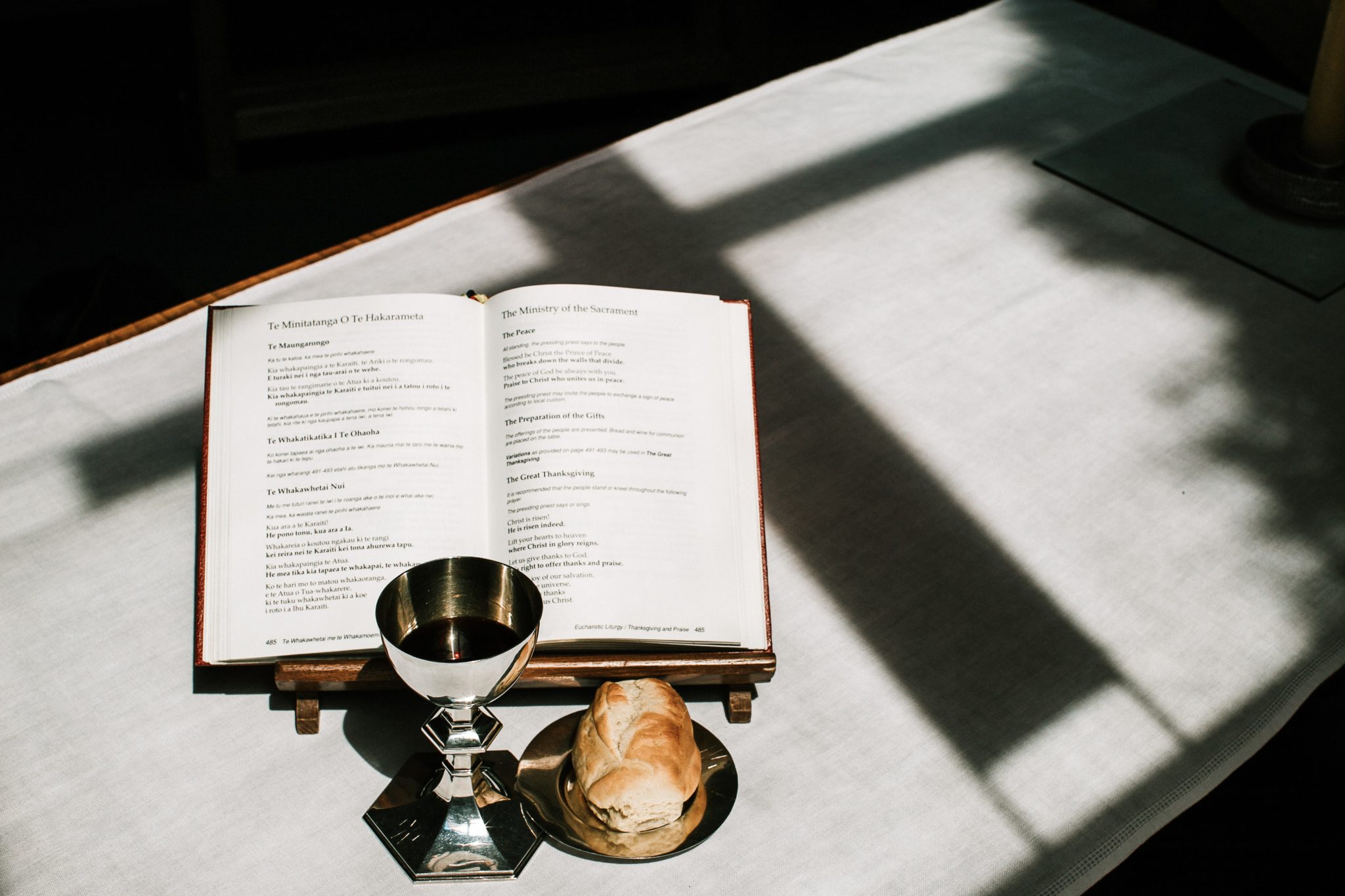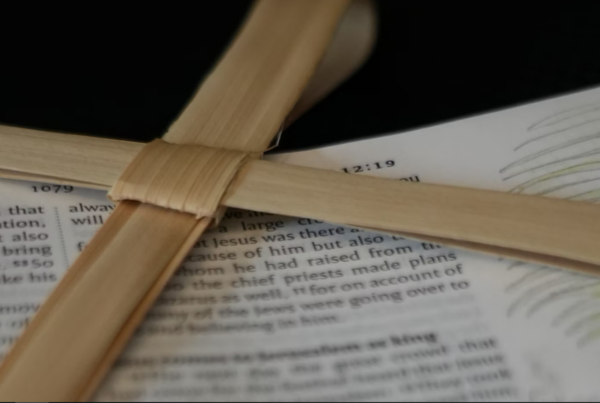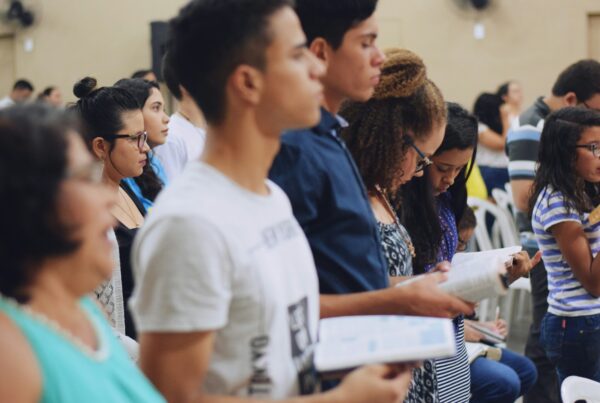A Workshop Rotation/Learning Center Event
Below is an outline for a rotational-style event to introduce Communion to baptized children and their parent/s or guardian/s and enrich their understanding of Communion. Use it as a beginning point for designing an event that meets the needs of your local congregation.
Every year or every other year, consider holding a “Communion Education Event” especially designed for elementary-age children. The Sunday prior to World Communion Sunday is one possibility for this special event. Parents or guardians (or other mentoring adults) are encouraged to accompany their child/children so that they begin or continue the conversation about this sacrament with their children.
Think about beginning with a simple lunch together (especially if the event is held at the conclusion of the Sunday morning schedule). It would be appropriate to have a bowl of grapes and a loaf of bread on the table. Following introductions, ask participants to talk about the things they are thankful for as they eat. Consider placing symbols of Communion on each table. Encourage participants to select one of the symbols to take home and place on their dining table the week before Communion (reminding each member to prepare to come to the Table).
Following lunch, have a storyteller present a firsthand account of the Last Supper (Matthew 26:17–30; Mark 14:12–26; Luke 22:7–39). With a Bible, show participants where the story may be found in the New Testament. As an alternative, if your congregation has a Children and Worship center, ask a storyteller to present The Good Shepherd and the Lord’s Supper (I and II).
Participants are then given “passports” (perhaps in the shape of a Communion cup/chalice, pitcher, plate/paten, loaf of bread, wheat, or grapes) that allow them to travel through various stations. The station names could be printed on the passports (perhaps in the preferred flow of order). The names of leaders in the stations can also be indicated. The stations might include the following:
1. A chat room with a pastor, elder/s, and other members of the congregation. They might talk about what it was like when they were children getting ready to participate in the sacrament and what participating in the sacrament has meant to them. If they did not participate as children, have them share about some of their first experiences at the Lord’s Table. They may also want to talk about how they currently prepare for the Lord’s Supper. Another talking point is what it means to them to belong to the family of God. Be sure to discuss the traditions of your congregation for celebrating the Lord’s Supper. (Is there a special cloth used on the Communion table? Is there a special story behind the cup, the plate, or the pitcher? Is the bread wheat, white, or pita? Do you provide gluten-free bread/wafers? Is the bread cut into cubes or torn from a loaf? Do you use wine or juice? Do you celebrate seated in the pews, by intinction, or another way?) Encourage questions and sharing from the participants as well.
2. A resource room where parents/guardians and children can select resources to take home or read/view there. Videos about communion could also be shown in this room.
3. An activity center (or grateful response) with activities that participants may do immediately and others that they may take home.
- Draw and/or create various symbols of communion from the materials provided (scratch art paper/cards, clay, foam sheets, paints, fuse/foam beads, markers, construction paper, glue/spray fixative, scissors, decorative papers, colored pencils, etc.).
- Bake and/or prepare the elements for communion. Bake extra loaves of bread to give away to someone in the neighborhood. Use a juicer or blender to make juice from grapes.
- Provide a music area for playing and/or singing communion songs (i.e. “You Are My All in All,” “Lift Up Your Hearts/Sing Alleluia,” “Eat This Bread,” “I Am the Bread of Life,” “Let Us Talents and Tongues Employ,” and “Let Us Break Bread Together on Our Knees”).
- Supply a 9×9 or 12×12 grid sheet so that participants may design a word search puzzle using words related to communion. These puzzles could be used in forthcoming children’s bulletins. Some participants may also select to design a bulletin cover.
- Make banners to use on communion Sundays.
- Write a prayer of thanksgiving. “We thank you God for…”
4. A practice place where pews or chairs and the Communion plates and cups are available. Participants have the opportunity to practice setting the Communion table, passing the plates, etc. Practice any responses (spoken or sung) that are used in the liturgy of the Lord’s Supper. As the plates and cups are passed in your congregation, individuals passing may say, “______, this is the body of Christ for you,” “_____, this is the cup of blessing for you,” or “______, God loves you.” (Note: This is when congregational name tags are helpful.) The elders who lead this station talk about hospitality in serving one another, etc. Elders may want to ask children about special meals that they have with their families and point out that communion is a special meal that we celebrate with our church family.
5. Communion around the world is a space where participants meet people from the congregation who have celebrated Communion in other parts of the world. They will share stories, photos, etc. with participants. As they tell their stories, challenge participants to think about the world and who sits at the table with us.
To conclude, have the front of the chancel decorated as it will be for World Communion Sunday (or another Communion Sunday) and take a commemorative photo of the participants that they may pick up the following Sunday. At World Communion Sunday (or the next time the Lord’s Supper is celebrated), have participants take a leadership role (bringing the elements forward, leading a litany, lighting a candle, cleaning up after Communion, etc.).
As participants gather around the Communion table, recall the story of Jesus in the Upper Room with the disciples (perhaps having participants help you retell it). Briefly talk about the symbol for Christ’s body and Christ’s blood and why Jesus wants us to eat this meal and remember this time. If some participants wrote a prayer of thanksgiving, these could be used to end the event.



